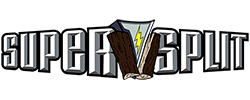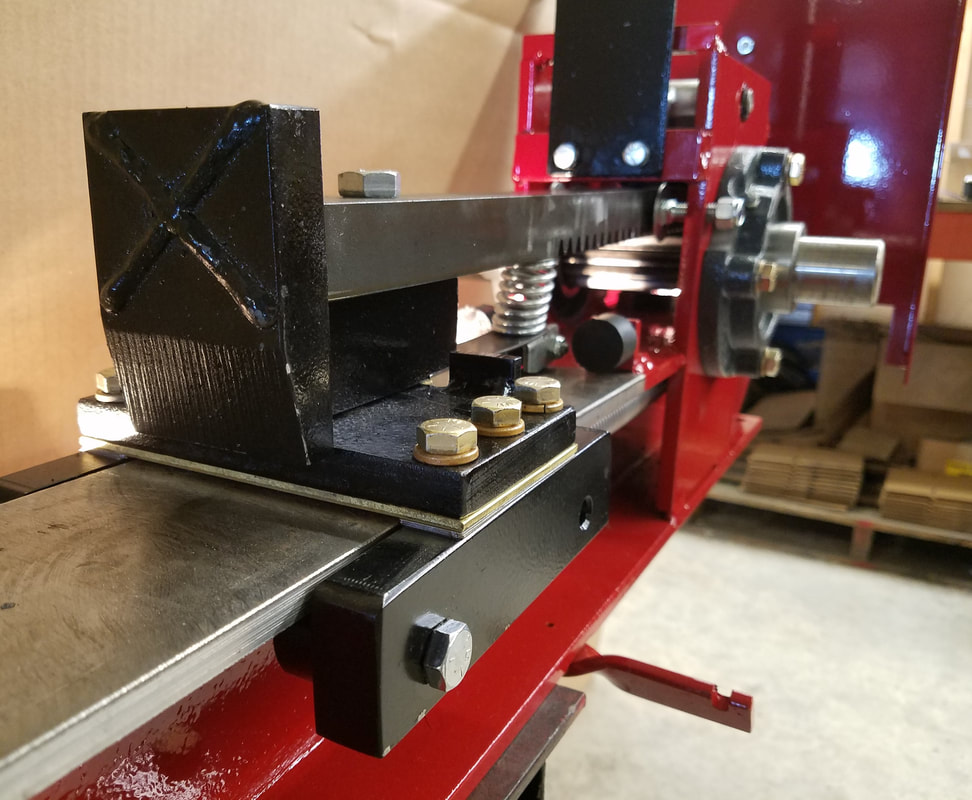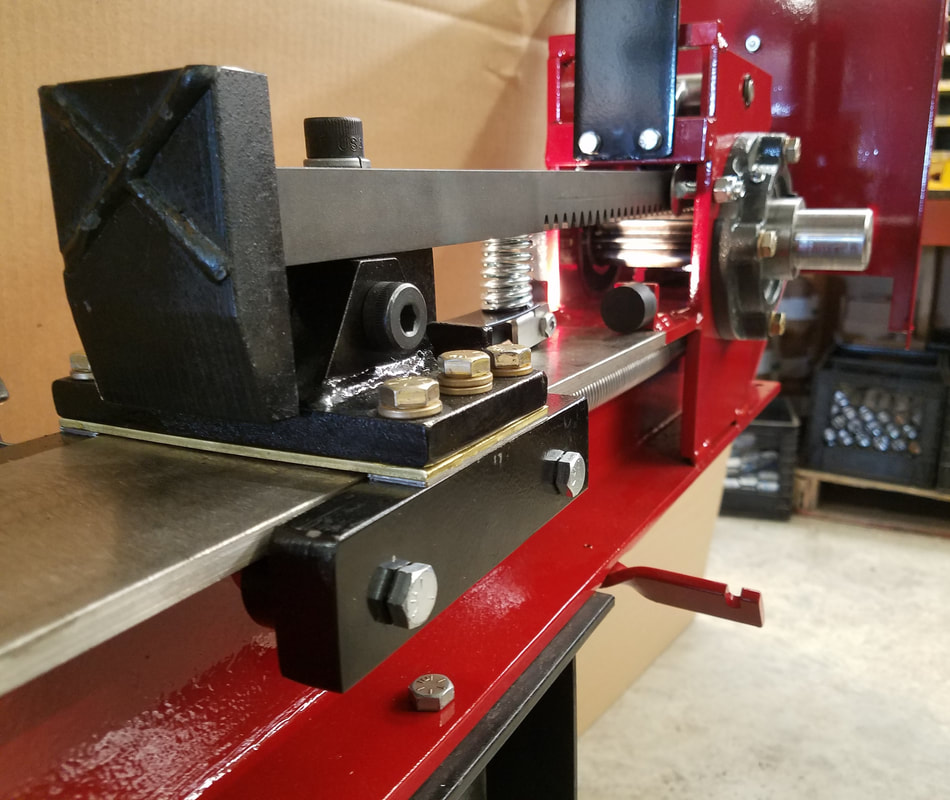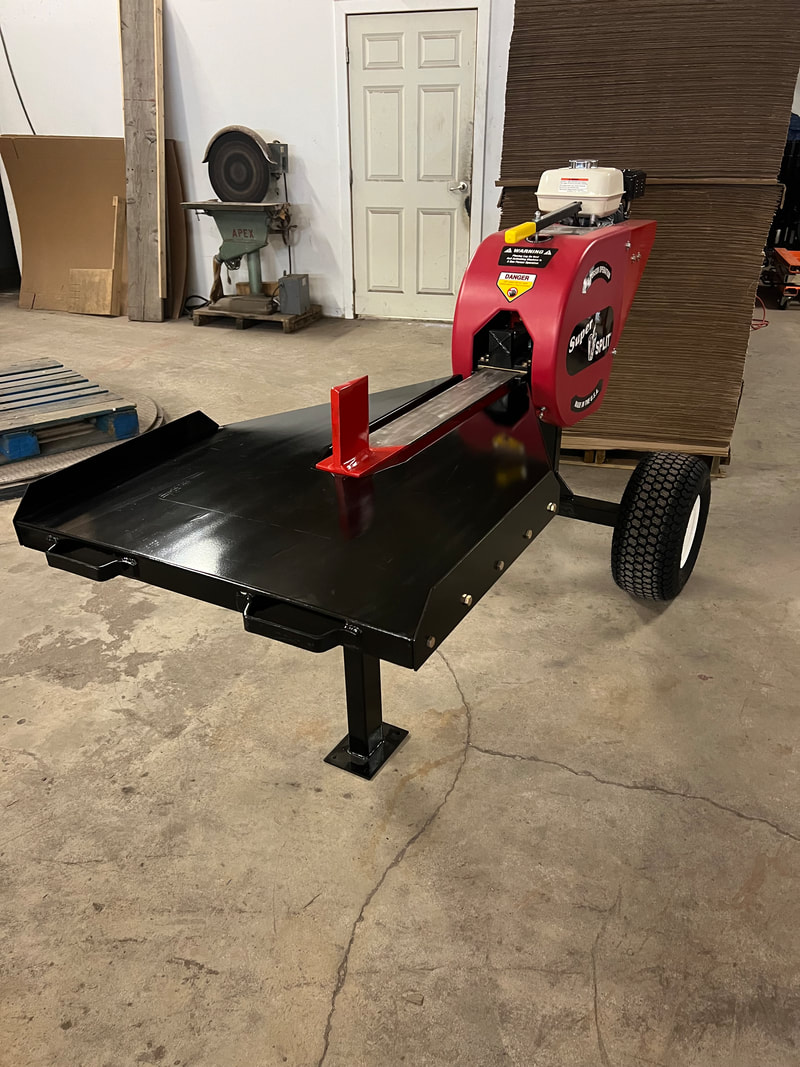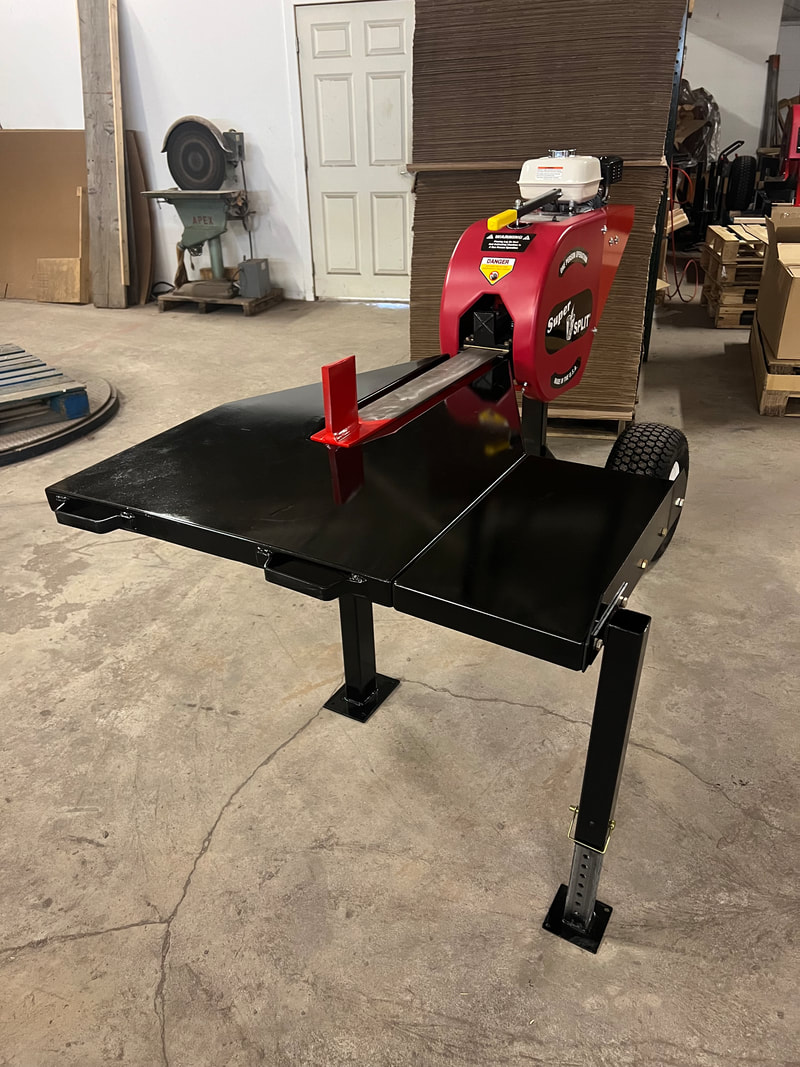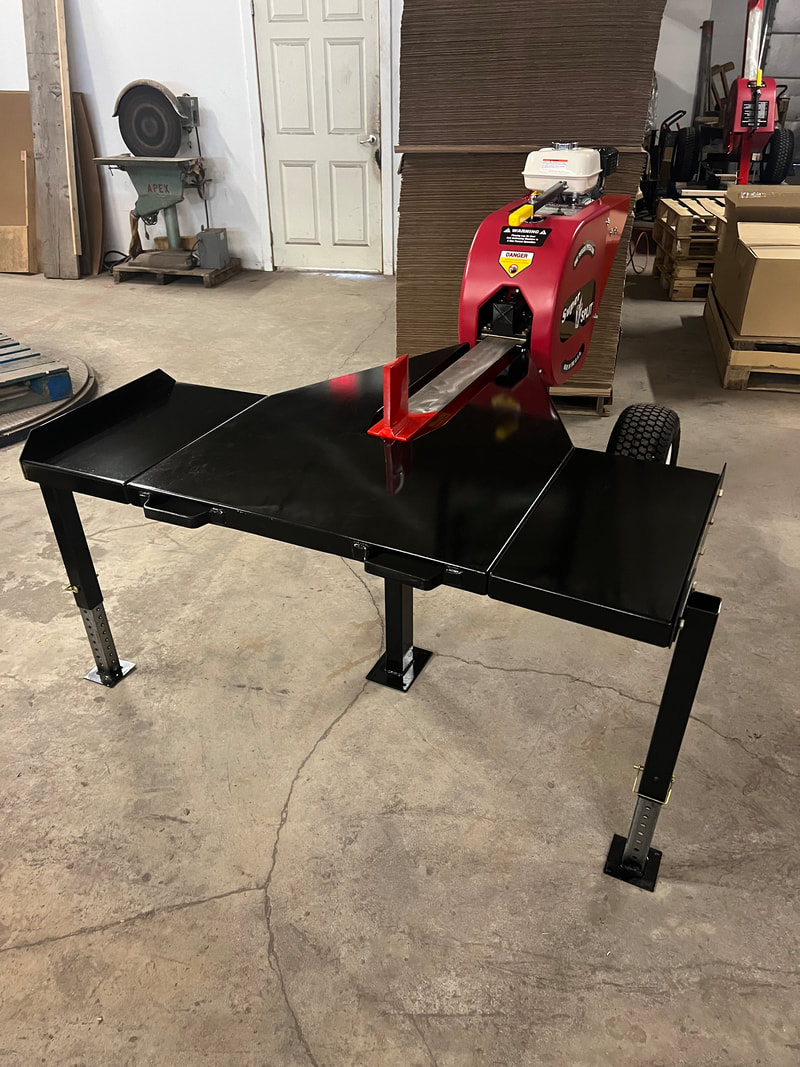All of our SuperSplit kinetic splitter models are identical in design, varying mainly in flywheel weight and thus impact force and performance. All parts are interchangeable, with any exceptions being noted below. In the forthcoming video section, each model will be demonstrated with different types of wood. Click on a topic below to learn more about the differences between models and options available.
J MODEL
HEAVY DUTY [HD] MODEL
SPECIAL EDITION [SE] MODEL
PRODUCTION TABLE
GAS vs. ELECTRIC
THE "BAD" NEWS
FINANCING INFO
J MODEL
|
The J model is the original SuperSplit design, featuring twin 75-lb flywheels, a 2-inch wide rack gear, and a rigid pusher design which pivots on the two bearings that travel under the top flange of the I-beam. The advantage of this design is minimal resistance for the spring returning the rack gear to the start position at the end of the forward stroke. The disadvantage is a larger gap under the brass wear plate (1/8”) during the return stroke increasing the possibility of debris getting lodged and causing resistance to the return spring. For this reason, it is important in all models to keep the top surface of the I-beam relatively clean.
Nearly 90% of all SuperSplit machines currently in service are 75-lb units. They are excellent for what I loosely refer to as “average hardwoods.” They will split extra-tough pieces as well, but may require multiple hits on occasion and a better eye towards reading the grain. As an example, I spoke with a customer that had split 500 cords with his 75-lb machine that year. His first machine had been stolen a few years prior; and when asked if he wanted to step up to the 100-lb unit when re-purchasing, he said he had never come across something he couldn't split with his 75-lb SuperSplit, and ordered another. |
HEAVY DUTY [HD] MODEL
|
Since 2012, the HD model has featured twin 90-lb flywheels (previously 75-lb), a two-and-a-quarter-inch wide rack gear, and a pivoting pusher design with four bearings traveling under the top flange of the I-beam. The pivot point for the rack gear is a hardened 5/8-inch shoulder bolt located above the I-beam, just behind the pusher plate. The advantage to this design is the consistent space between the I-beam and the pusher plate, resulting in less chance of debris getting between the two and causing resistance on the return stroke. Again, keeping the surface of the I-beam relatively clean is still important with any SuperSplit model (this will be demonstrated in the forthcoming video section).
The HD model has more impact force and is ideal for the tougher woods, or for those who consistently tend to split their wood closer to the 24-inch maximum length the machine will accept. With the HD model, the flywheels will stall less often on difficult wood than with the J model. Note that stalling the flywheels is not a bad thing! Instead of busting a gut trying to split a piece of wood that is giving a lot a resistance, the SuperSplit will give the wood “Round One” and will then follow up with another shot using the full momentum of the flywheels, until it pushes it through the wedge. |
SPECIAL EDITION [SE] MODEL
The SE model was designed for arborists charged with felling many large elm trees due to the Dutch Elm Disease in the late 70s and early 80s. It has twin 100-lb flywheels with the same rack gear and pusher design as the HD model. The main difference between the HD and SE models, beyond the 20-lbs of flywheel weight, is the engine. The SE model has a 9 HP Honda engine with a 2:1 gear reduction, allowing the engine to power through a log that would normally stall the flywheels. Keep in mind that the HD had always had 75-lb flywheels up to 2012, so the SE was needed to handle large elms which are notorious for their twisted, intertwined grain. The SE should only be considered for the commercial wood splitter who must consistently process large amounts of particularly difficult wood.
PRODUCTION TABLE
GAS vs. ELECTRIC
The main advantage to the gasoline engine is portability. It will also supply some extra torque to get through some tough logs that might otherwise have stalled the flywheels. The disadvantages are the noise level and the potential additional maintenance required. Additionally, if the machine will spend extended periods of time in storage, the gas will need to be treated or drained in order to prevent damage to the carburetor.
Conversely, the electric motor version is quiet and requires no maintenance during storage; however, it is less portable without a generator. The main concern with the electric engine is to be quick to disengage the engagement mechanism by tapping down of the handle if the flywheels stall due to a tough log. It can be harmful to an electric motor to repeatedly stall out under load. Without the additional torque that the gas engine supplies, the electric engine may stall a little more often; but many find this a fair tradeoff for the quiet performance.
Conversely, the electric motor version is quiet and requires no maintenance during storage; however, it is less portable without a generator. The main concern with the electric engine is to be quick to disengage the engagement mechanism by tapping down of the handle if the flywheels stall due to a tough log. It can be harmful to an electric motor to repeatedly stall out under load. Without the additional torque that the gas engine supplies, the electric engine may stall a little more often; but many find this a fair tradeoff for the quiet performance.
THE "BAD" NEWS
The best feature of the SuperSplit is also its Achilles heel. It is a kinetic (i.e., mechanical) splitter, and a return spring pulls the ram back to the starting position on roller bearings. As such, the design doesn't favor a build-up of dirt, grease or sap. The small bearing on the top of the I-beam takes the brunt of this, so particular care needs to be given to keeping it clean with a spray solvent, compressed air or whatever else floats your boat. If you neglect this simple maintenance step, the bearing can get gummed up, stop rolling and develop a flat spot, which may hinder the return of the ram to the starting position (more on this in the forthcoming video section).
FINANCING INFO
We have a longstanding professional relationship with Mike Wasko and North Star Leasing. Click here to finance your logsplitter.
Mike Wasko
Business Development Specialist
North Star Leasing Company
747 Pine Street Suite 201, Burlington, VT 05401
Phone: 802-540-8391
Fax: 802-658-9724
www.northstarleasing.com
Mike Wasko
Business Development Specialist
North Star Leasing Company
747 Pine Street Suite 201, Burlington, VT 05401
Phone: 802-540-8391
Fax: 802-658-9724
www.northstarleasing.com
